
Lecturer: Mayada K. Mohammed
Fifth class
PHC
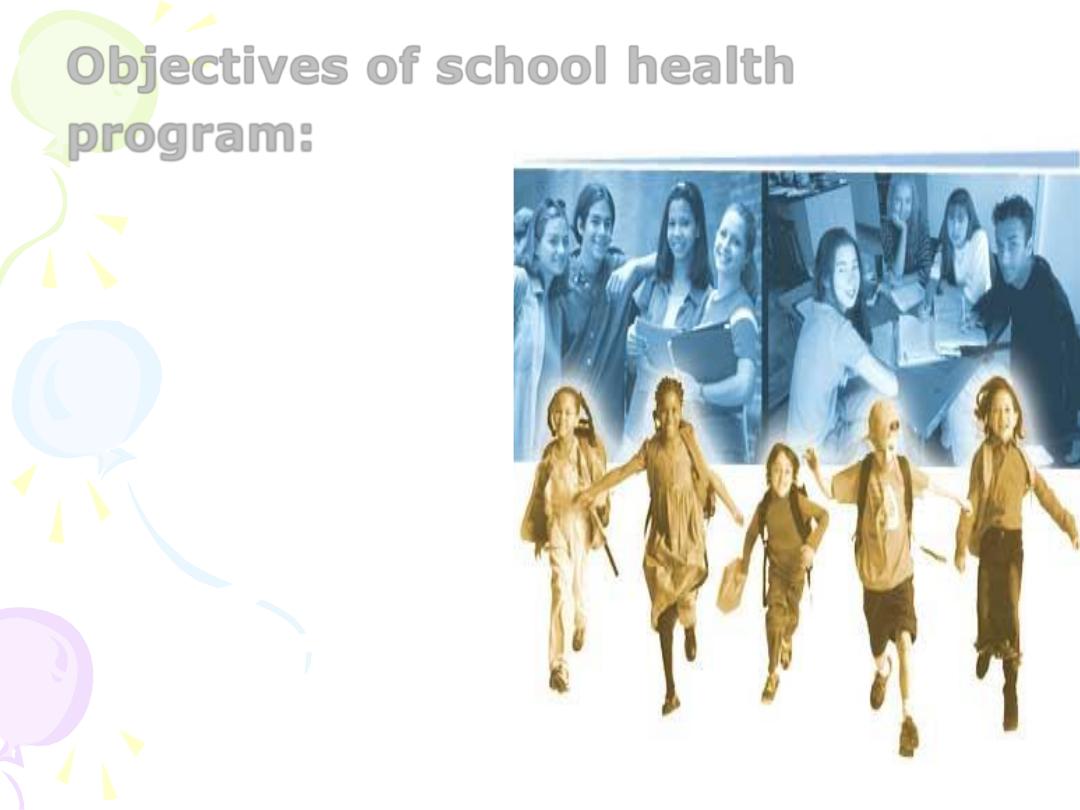
Objectives of school health
program:
• health promotion
of school
children,
• prevention and
control of health
hazards, and
• rehabilitation of
the handicapped.

The school child is the subject of
special consideration for many
reasons:-
•
This group is of vital importance to the
health of the community,
•
They constitute a sizeable segment of the
population.
•
School children are subject to the risks and
dangers of communicable diseases.
•
They undergo the stresses and strains of
growth and development.

• The physical, mental and emotional
stresses should always be considered.
• Unsanitary environmental hazards are
gaining lots of attention due to its impact
on health.
• There is close relationship between health
and education:
“Education is fundamental to health and
health is vital for efficient education”.
• Supervision of health in schools needs
to be comprehensive and continuous.

Targets of School Health:-
•
Creation of a suitable
environment indispensable
for healthy development.
•
To have a clear picture of the
health conditions of students
and employees through
various types of medical
inspection and evaluation.
•
The early discovery of
deviations from normal, and
the application of prompt
corrections.
•
Training of scholars in health
habits through efficient
programs of health
education.
•
Care for the handicapped,
maladjusted or crippled .
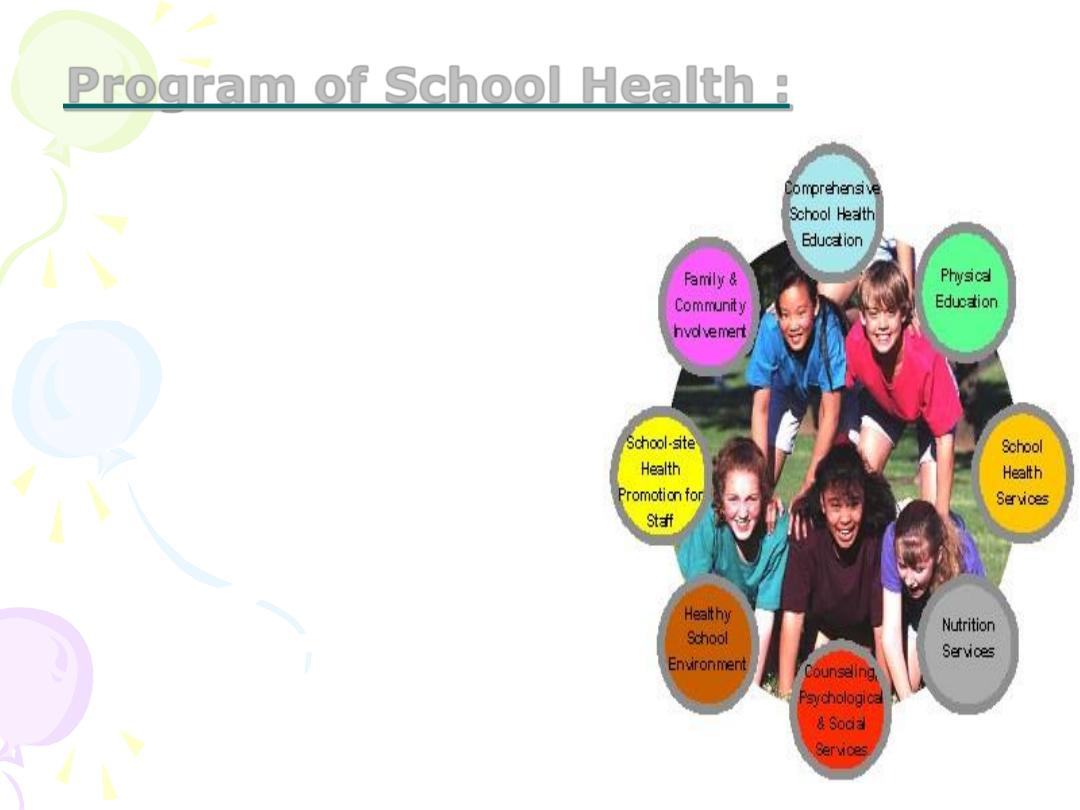
Program of School Health :
1. Health Promotion.
2. Prevention of
health hazards.
3. Medical Care .
4. Health Education.

Health Promotion:
• Adequate nutrition,
• Sanitary school environment,
• Meeting the needs for mental
development
(emotional & behavioral
adjustment ),
• Physical fitness and activities,
( for musculoskeletal
development )
• Prevention of mental fatigue,
• Social activities and recreation.

SCHOOL ENVIRONMENT:
• Value of Sanitary Environment:
– Basic preventive measure of
communicable diseases.
– Contributes to health promotion .
– Provides feeling of comfort, and
enhances educational achievement.
– Draws good example of clean
environment.

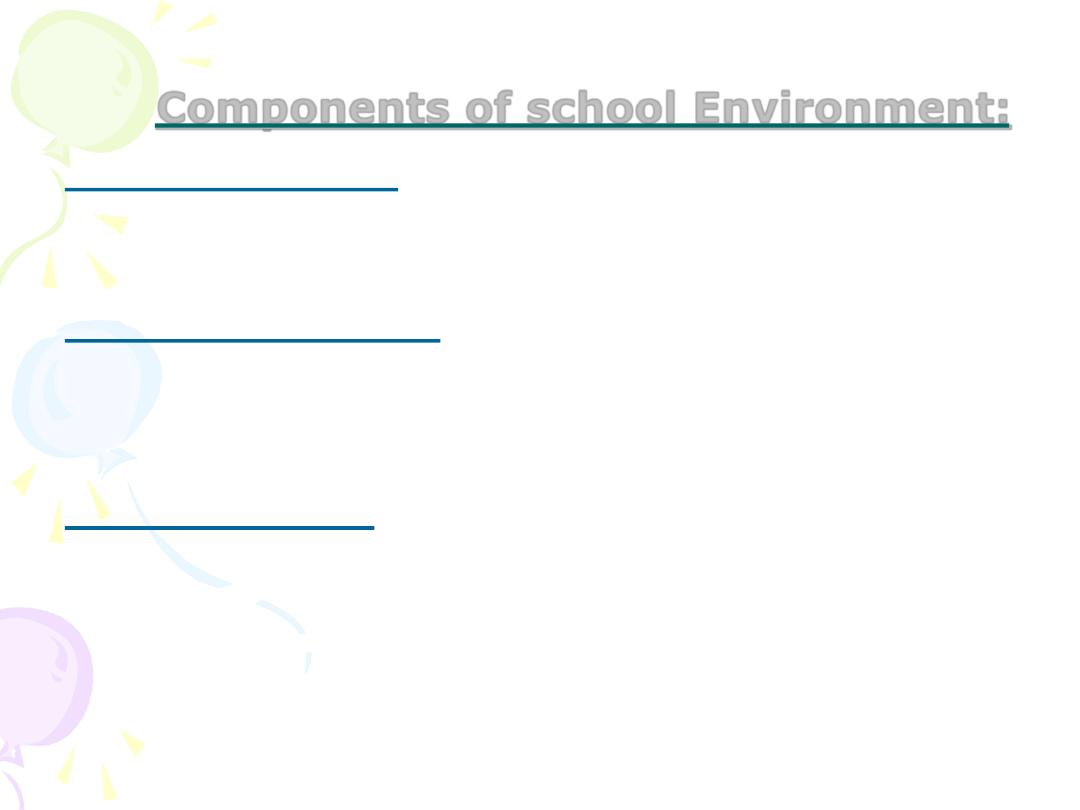
Components of school Environment:
1. Site and area:
- easily reached.
- Located in quite area.
- 10 – 15 square m. / scholars
2. School building:
- Damp, fire and rat proof.
- 2 – 3 floors
- > 1 stair case.
- Governmental design( E, T, L types ).
3. Class rooms:
-
Rectangular 6x8 = 48 m2
- 1-1.5m2 of floor area for primary students,
- 1.5-2m2 for intermed. & high school students.
- Windows location on left side.
- Allow best illumination.
- Natural & white ceiling.

• 4. School furniture:
- Suitably suspended
writing board,
- Height & slope of
desks
( 15 degree angle ),
- Size of seats in
relation to students
age & built,
- Distance between
columns of desks
( 60 cm.).

• 5. Kitchen and Dining:
- Proper illumination &
ventilation,
- Rat & insect proof,
- Washable walls & floors,
- Cold & hot water taps,
- Refrigerators ,
- Sanitary refuse baskets ,
- > one door ,
- Proper control of food
handlers.
• 6. Water, Sewage and
refuse disposal:
-
Drinking fountains,
- one tap / 40 students,
- one toilette / 30
students,
- Soap & ? Paper towels

Objectives medical examination:
• Case-finding, specially of unapparent
disease ,
•
Assessment of health status of school
children,
( planning and evaluation of school health services.)
• Primary examination at school entry
( baseline for follow-up of health status ),
• Health education and guidance of students,
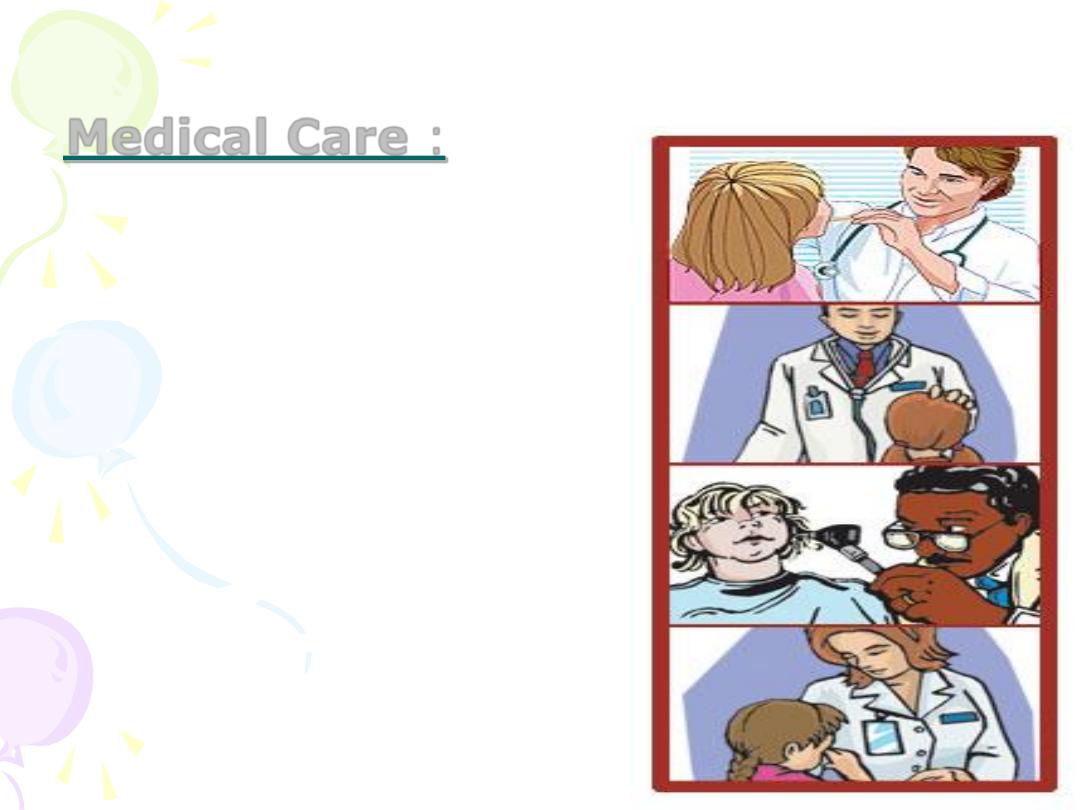
Medical Care :
1.
Health Appraisal
includes:-
-
comprehensive
medical examination,
- screening tests,
- clinical (curative)
service, and
- survey studies.

2.
Screening Tests:
• They are simple tests which can be
carried out frequently to:
-To screen for certain pathological conditions or
diseases.
-To screen suspected cases of disease, who
need further investigation for final diagnosis.
• Examples of screening tests include:
- weight and height,
- visual acuity,
- acuity of hearing,
- IQ testing, and
- dental examination.

3.
Clinical Service:
• School health units,
• referrals to specialized
clinics,
• referrals to hospitals for
diagnosis and treatment
of disease.
• Some cases may need
specialized diagnosis
or/and management.

4.
Survey Studies:
• Occasionally required for investigation
of a particular disease or health
problem, specially when precise data
are not available,
( e.g. nutritional deficiency and parasitic
diseases, and handicapping conditions).
• Objective of survey study:
- to find out ecological data
(host – agent – environment)
-or health problem under study,
(which are needed for planning and
evaluation of prevention and
control programs).

5- Handicapping conditions:
• May be congenital or acquired.
• Children with minor or mild
cases of disability can attend
regular schools,
• Severe forms (e.g. the deaf,
blind, or mentally retarded)
can attend special institutes.
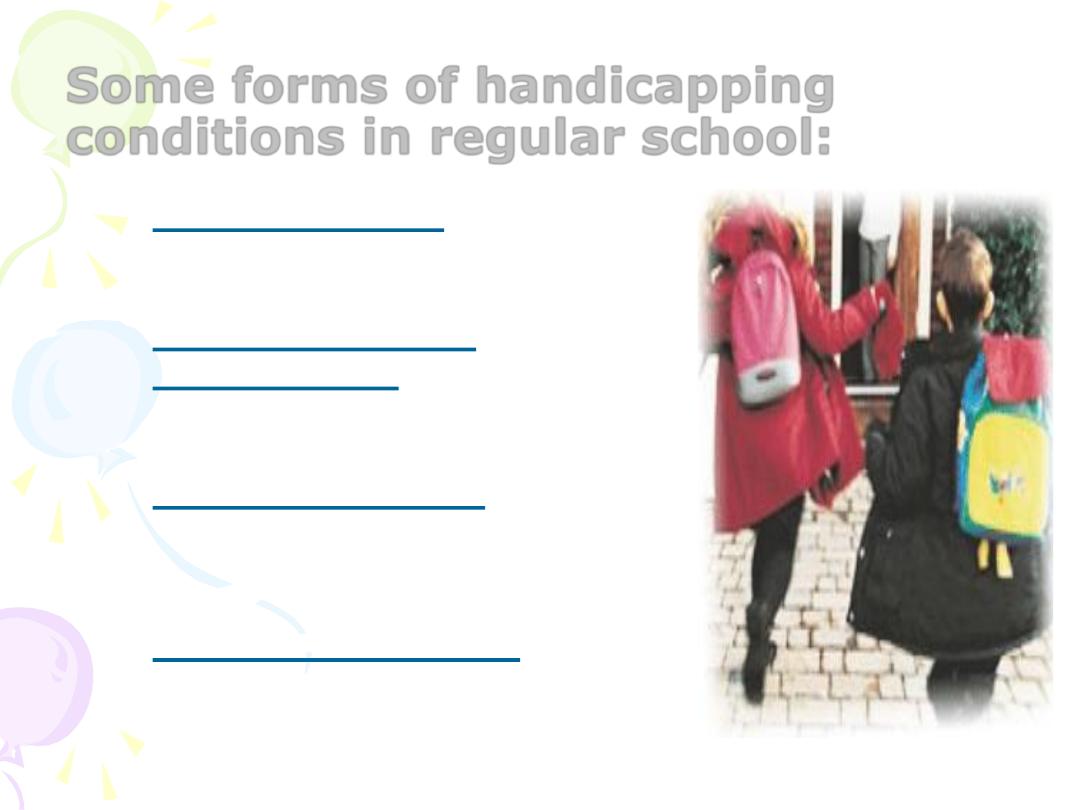
Some forms of handicapping
conditions in regular school:
– Heart disease:
Rheumatic valvular disease is
the most important.
– Musculoskeletal
deformities:
mild paralytic poliomyelitis, and
healed rickets.
– Impaired vision:
mainly due to errors of
refraction, and may be corneal
opacity.
– Impaired hearing:
neglected chronic otitis media,
ear injury by foreign body, and
occasionally ototoxic drugs and
complicated meningitis.

• School Health Record:
Each school child should
have his own health record,
for registration of events
and activities related to
health.
• Contents of Record:
- Personal and social data.
- Results of health appraisal.
- Immunizations /date/age.
- Any morbidity, and
management record.

• Value of Health Record:
-For reference whenever
registered health data
are needed;
e.g. past medical history to assist
diagnosis of existing disease.
-Allows follow-up of chronic
disease.
-Collecting statistical data and
indices of school children,
( for future planning and
evaluation of health services).

• Role of Teacher:
- Screening suspected cases
through supervision of the
students in the classrooms.
- Participation in health
education program.
- Supporting mental health
promotion.

• Role of School Health Physician:
– Health appraisal, including medical
examination, and medical care of the
sick.
– First aid and emergency service.
– Participation in prevention and control
of communicable diseases.
– General inspection of the school
environment.
– Participation in health education
program.
– Supervising preparation of statistical
indices and health reports.

